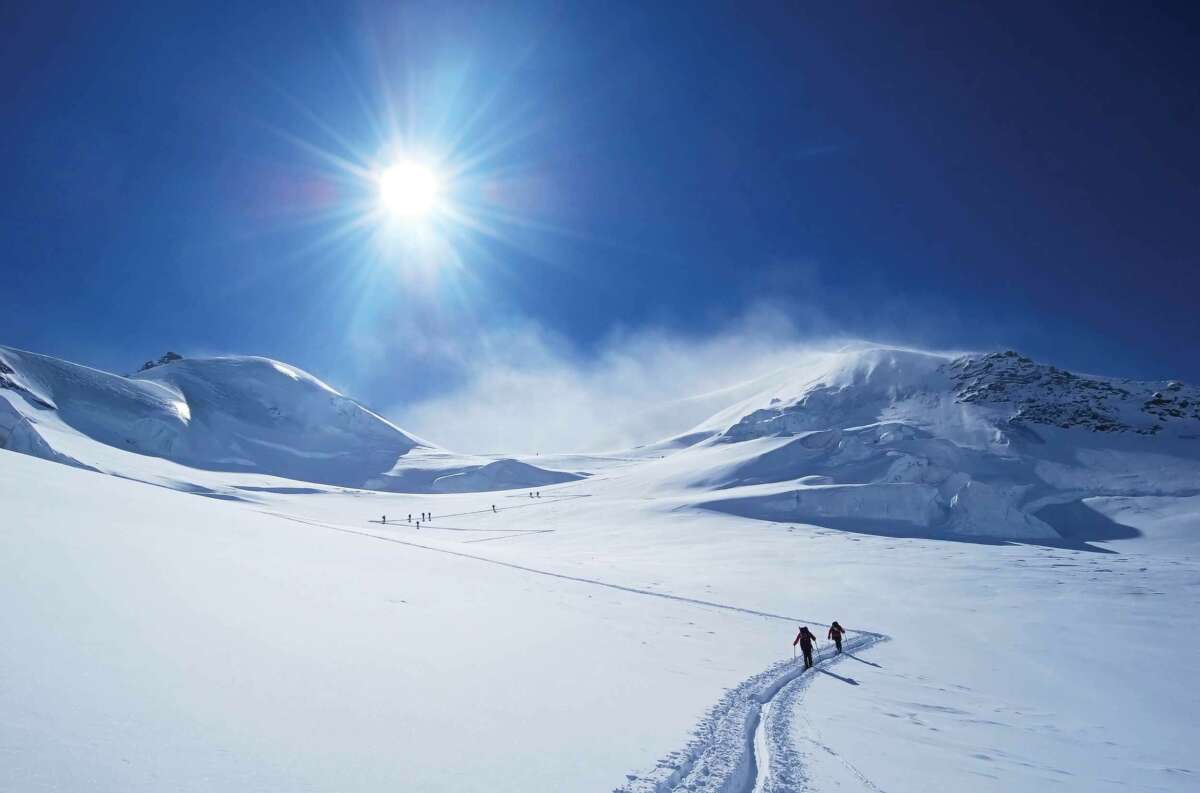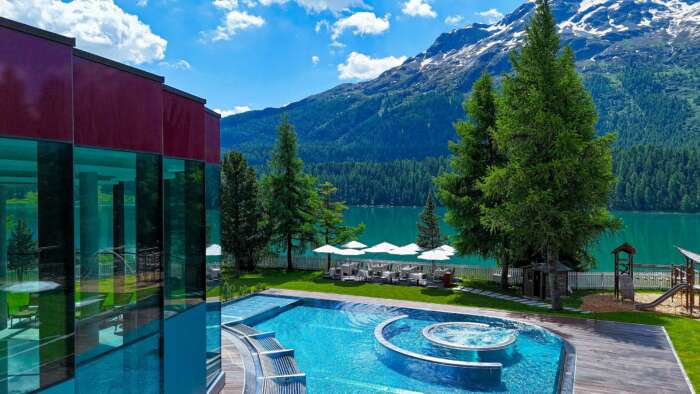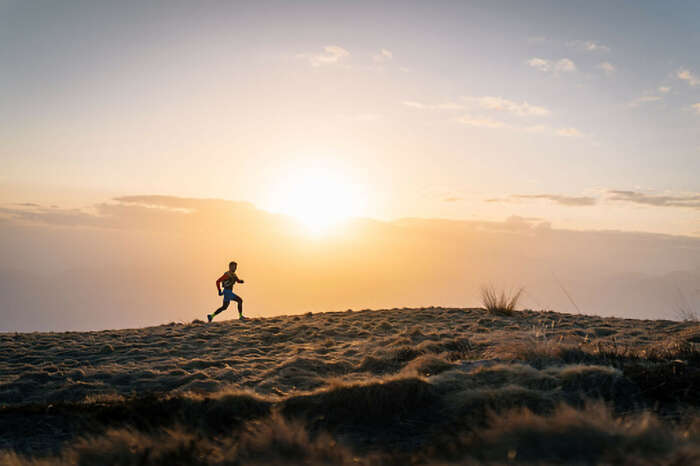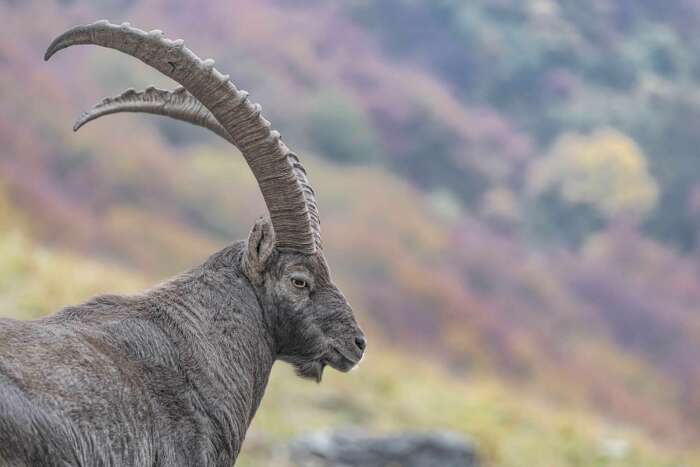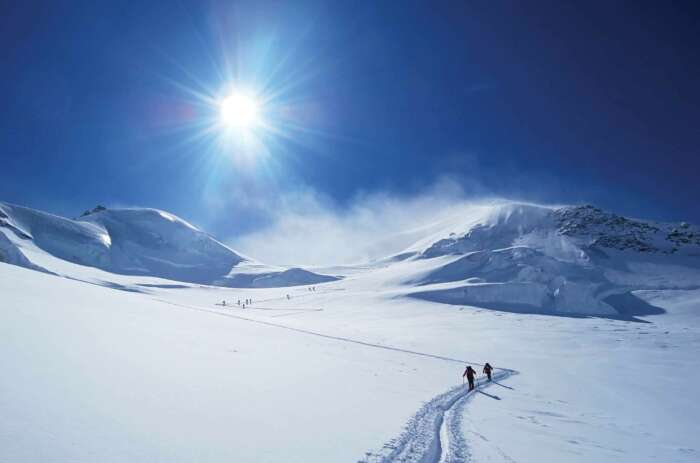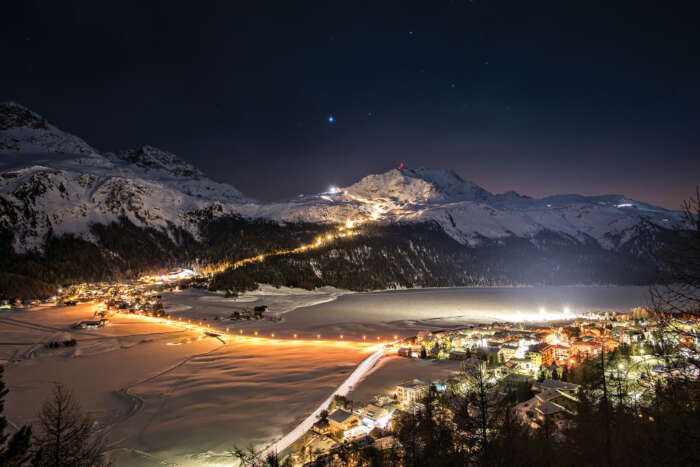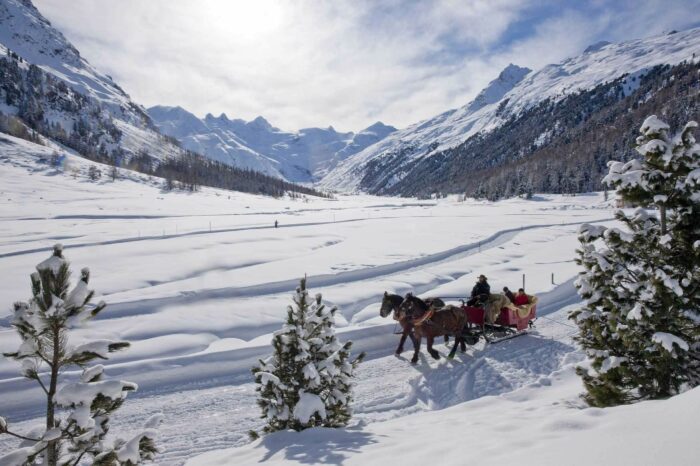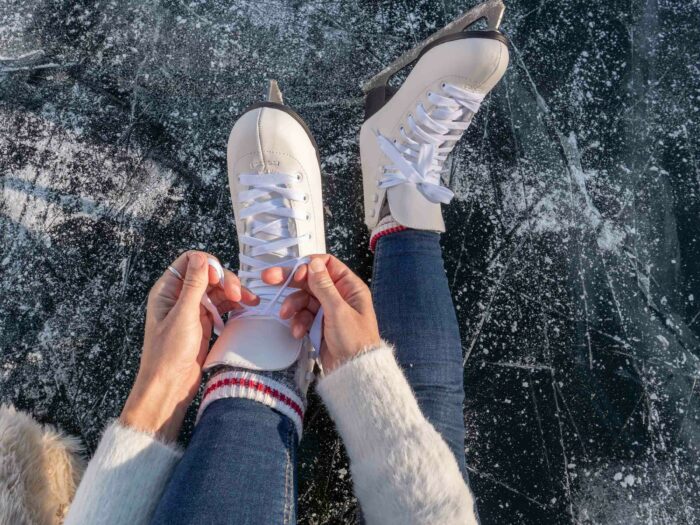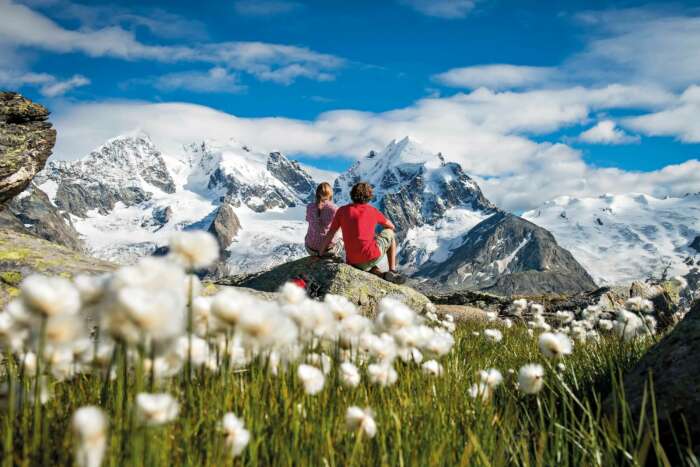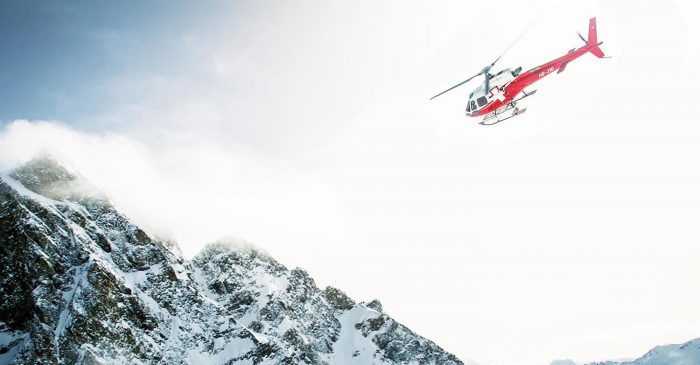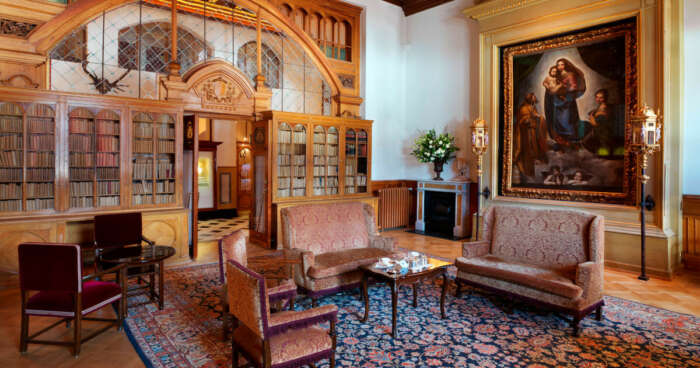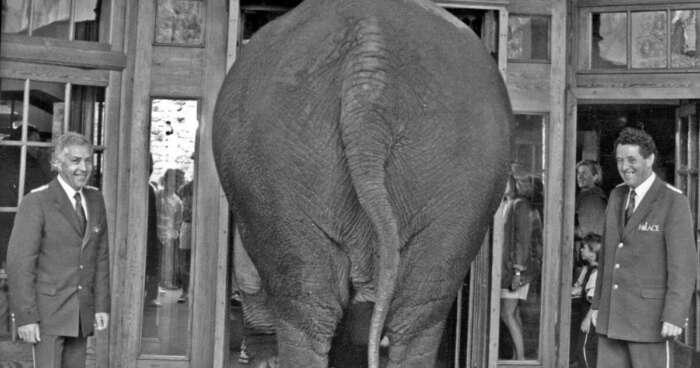I am not one of those so obsessed with ‘earning my turns’ that I have given up on riding the lifts to ski a perfectly pristine piste. That said, whenever I am in the Engadin the lure of ski touring – a combination of cross-country and downhill skiing that provides access to areas considered inaccessible to ordinary skiers – is strong and is one of the most magical and secluded ways to experience the mountains.
Ski touring’s popularity has grown rapidly in recent years thanks to advances in equipment design. However, it is worth remembering that the activity is really how downhill skiing began, so we have come full circle. Enjoying it not only offers an extra sense of reward for your efforts and freedom from the queues and mechanised world of ski lifts and groomed slopes, but it connects you to the pioneering years of downhill skiing, too.
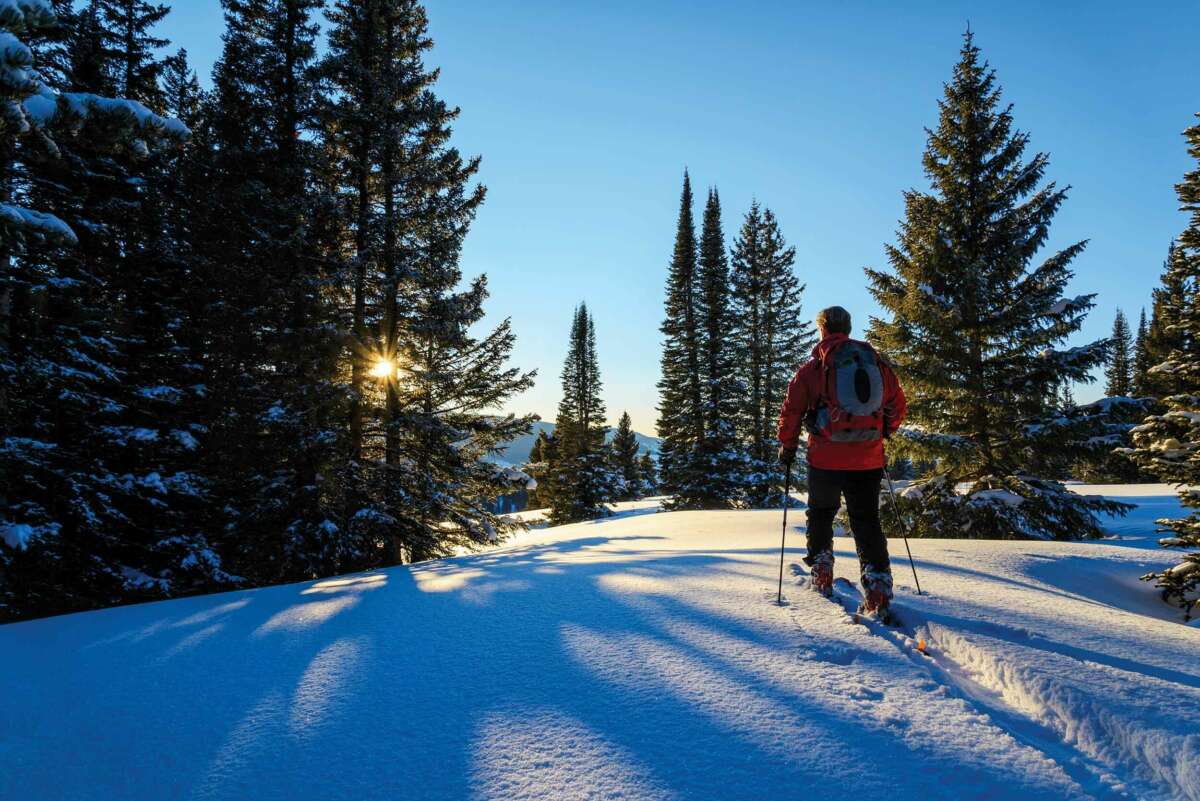
St. Moritz is acknowledged as the home of winter tourism, after the first pioneering Brits famously accepted an invitation from Johannes Badrutt, the father of Badrutt’s Palace founder Caspar, to spend the winter of 1864/65 here. They started the love of snow and sun that has spread around the world over the century and a half since, although there was no downhill skiing back then.
In fact, downhill skiing was just being conceived in Norway in the 1860s, as those first snow tourists arrived in Switzerland, but it took some decades for the concept to begin to catch on in the Alps. The first downhill skis probably arrived in the Engadin in the 1890s, just at the time that Caspar Badrutt was overseeing the construction of the Palace.
“We have pictures of skiers in the 1890s,” says Dora Filli of the St. Moritz Library. “One of them, the Reverend Camill Hoffmann, was also the first director of the St. Moritz Tourist Board. They may be the first skiers in St. Moritz.”
Those early skiers had long, thin, wooden skis adapted from cross-country skis, and until the ‘Alpine technique’ and twin ski sticks were invented in the early 1900s, they pushed themselves along through the deep snow with a single long pole, not dissimilar to a Venetian gondolier.
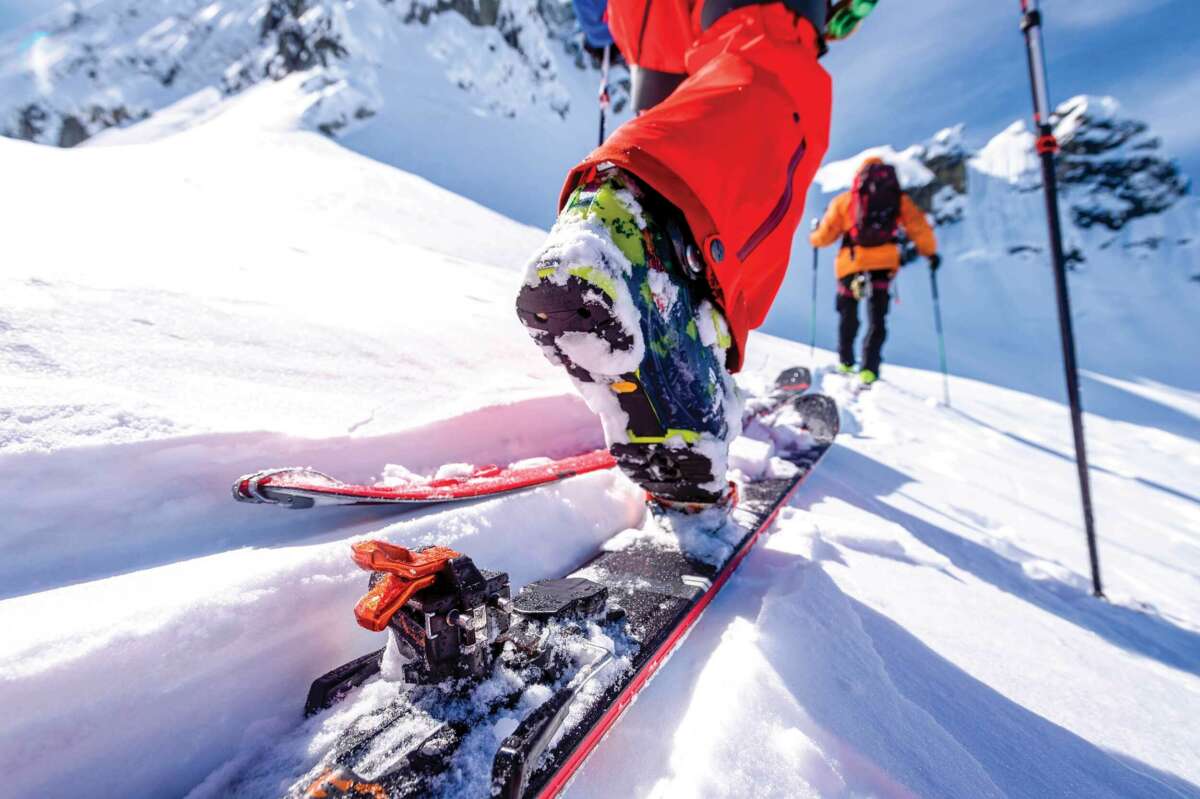
Evolution of the sport
Today, ski touring is much more hi-tech. You need special equipment, including skis with bindings that can be disconnected at the heel as you ascend so that you can move efficiently. And modern synthetic versions of the long thin strips of seal skin that early skiers used on the base of their skis (still called ‘skins’) provide grip as you ascend.
But much more important is ski tourers’ safety. When you go ski touring, you are typically leaving an area that is patrolled and kept avalanche-safe. So you need to carry an avalanche transceiver, probe and shovel and know how to use them.
On the one hand, ski touring is something that most fairly fit, competent skiers can easily try and enjoy (there is also a version called splitboarding for snowboarders), but it is not something to be undertaken lightly. You need to learn technique and most importantly how to read the mountain. For that, you require instruction and guidance, at least in the first instance. “We begin at Corviglia where we look at the basics: how an avalanche transceiver works, the other equipment you need and how to use it. If the skiing level is good enough, we try to walk with the skins on the skis and learn how to do switchbacks,” explains Tiziano Zeller, Manager at Snowsports St. Moritz, the oldest and largest ski school in the resort. “If this all works out, there are short climbs in the Corviglia area that we can do, but there are many possibilities in the entire Upper Engadin, especially in the Julier Pass area, where we do tours that are not too steep or difficult but are out and about in nature.”
Getting it right from the start will pay dividends as your skills progress, and an entirely new world of skiing you never dreamed existed will open up for you in the stunning Engadin valley.
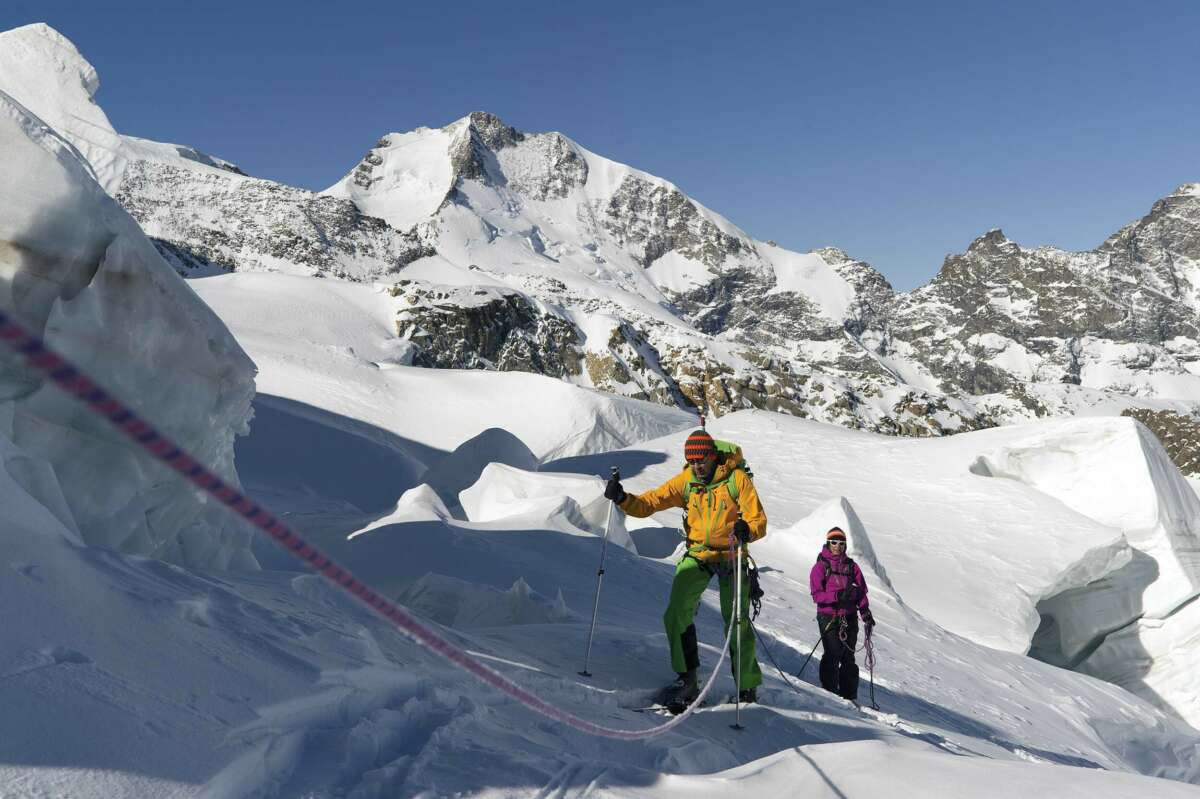
Ski touring in the Engadin
The valley is high at 1,800 metres (5,906 feet) and surrounded by possibly more 3,000 metre-plus (9,843 feet) peaks than anywhere else. Many are easily accessible on a pair of skis or skins, with great snow right from the valley floor.
The best place to be on any day is often different to the day before. The snow and weather dynamic is more nuanced than for piste-skiing so it is important to do your research and consult local guides. There are many options, but for me, the Diavolezza glacier is a big draw.
Here, there is the choice of taking the cable car up to the start of one of the world’s great ski descents, or alternatively put on your skins and ascend the Diavolezza Challenge, a safe and clearly marked uphill 890-metre (nearly 3,000 feet) route created especially for tourers, requiring a ski pass or special ticket to access.
I make a more leisurely effort with plenty of long breaks as I ponder on the fact that ‘Diavolezza’ translates as ‘she-devil’ in the local Romansch dialect, which is a reference to the fact that the glacier once lured shepherds and hunters to their icy ends here.
The nine-kilometre (5.6 miles) descent to Morteratsch is Switzerland’s longest glacier run and one of the great runs of world skiing, so well worth the effort. From the top of the cable car, the route begins via the Gemsfreiheit (3,185 metres /10,450 feet) before beginning the descent to Morteratsch, which is almost 1,100 vertical metres (3,609 feet) below.
Although there is one steep section of about 300 metres (985 feet) to negotiate, the route, crossing the Pers and Morteratsch glaciers, is not the area’s most challenging. It is though, one of the most rewarding, thanks to the fantastic snow, the near silence all around and the spectacular scenery filling the view as you descend. I can see the biggest peaks in the Eastern Alps with Piz Palü (3,900 metres / 12,795 feet) towering above and the more distant 4,049-metre (13,284 feet) Piz Bernina dominating the landscape.
The glacier is a land of eternally moving ice, some five billion tonnes of it in fact, so although the route is marked with yellow posts to keep you from the crevasses, you should only tackle the descent with a local guide.
Whether you are a skiing novice or an expert, you will discover that the topography of the Engadin has been created for ski touring. So, time to put on your ski skins and climb to the top of a mountain.
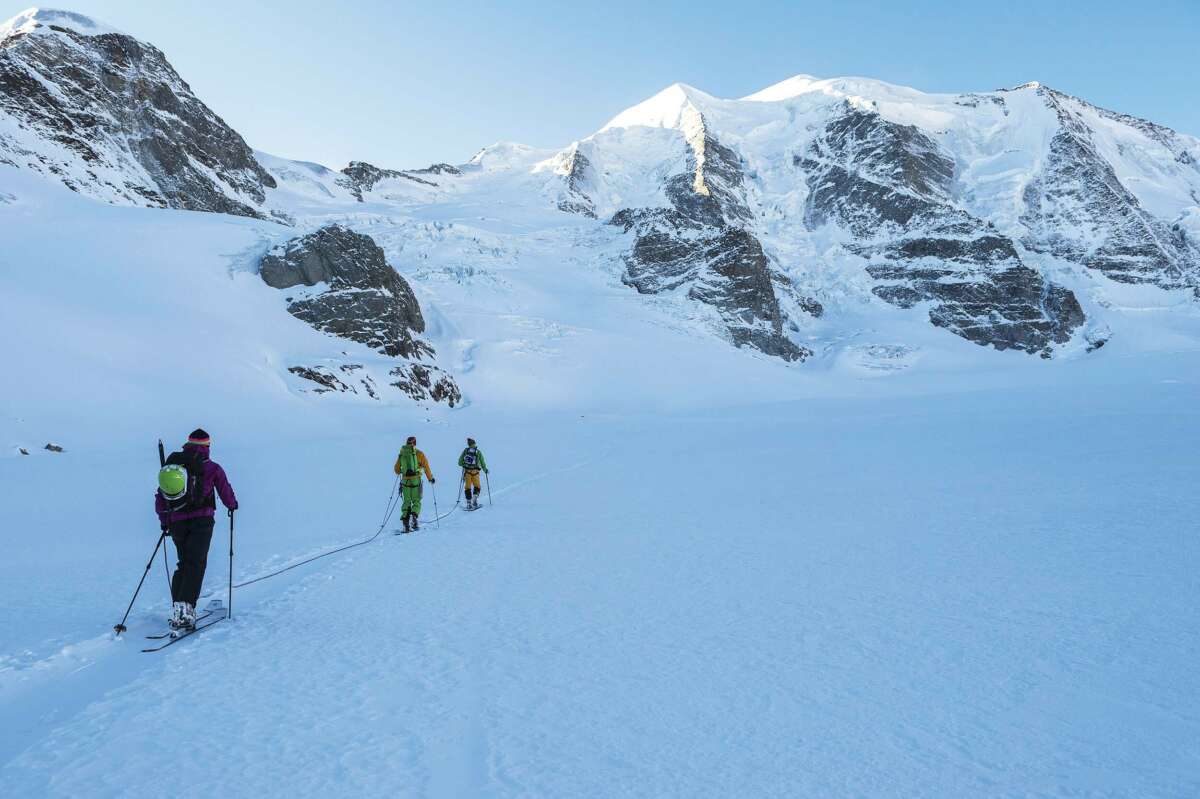
Top ski tour routes
Easy You can cheat a little, if you like, reaching Piz Belvair (2,821 metres / 9,255 feet) above the peaceful village of Zuoz, by taking the Pizzetlift for the first part of the ascent, before starting on your skins.
Moderate The ascent to Piz Lagrev (3,165 metres / 10,384 feet) from the Julier Pass, the most famous ski touring region of the Engadin, involves a steady ascent taking around 3.5 hours and climbing almost 1,000 vertical metres (3,281 feet) over its nearly nine-kilometre (5.6 miles) length. The reward is stunning scenery and fabulous snow.
Difficult There are numerous challenging ascents and descents for fit and proficient ski tourers, along which the ski school or Alpine guides can lead you. Options include multi-day tours such as Graubünden’s Haute Routes
